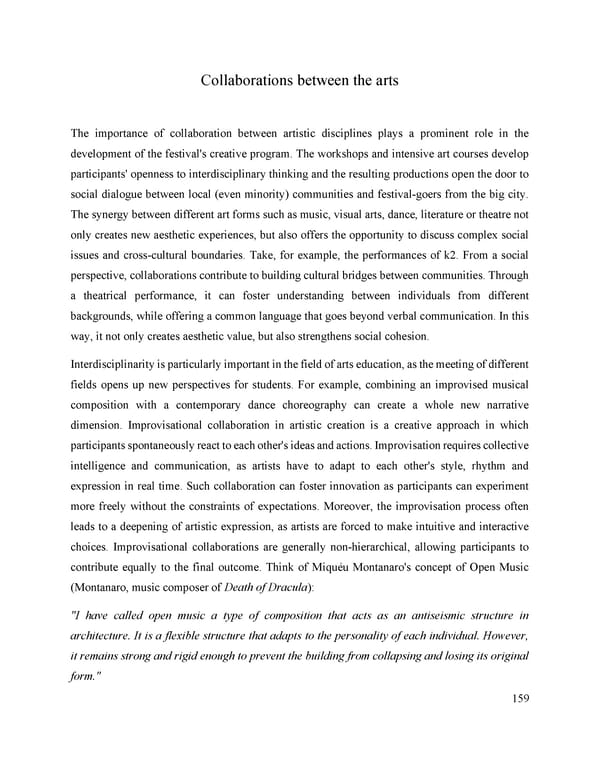Collaborations between the arts The importance of collaboration between artistic disciplines plays a prominent role in the development of the festival's creative program. The workshops and intensive art courses develop participants' openness to interdisciplinary thinking and the resulting productions open the door to social dialogue between local (even minority) communities and festival-goers from the big city. The synergy between different art forms such as music, visual arts, dance, literature or theatre not only creates new aesthetic experiences, but also offers the opportunity to discuss complex social issues and cross-cultural boundaries. Take, for example, the performances of k2. From a social perspective, collaborations contribute to building cultural bridges between communities. Through a theatrical performance, it can foster understanding between individuals from different backgrounds, while offering a common language that goes beyond verbal communication. In this way, it not only creates aesthetic value, but also strengthens social cohesion. Interdisciplinarity is particularly important in the field of arts education, as the meeting of different fields opens up new perspectives for students. For example, combining an improvised musical composition with a contemporary dance choreography can create a whole new narrative dimension. Improvisational collaboration in artistic creation is a creative approach in which participants spontaneously react to each other's ideas and actions. Improvisation requires collective intelligence and communication, as artists have to adapt to each other's style, rhythm and expression in real time. Such collaboration can foster innovation as participants can experiment more freely without the constraints of expectations. Moreover, the improvisation process often leads to a deepening of artistic expression, as artists are forced to make intuitive and interactive choices. Improvisational collaborations are generally non-hierarchical, allowing participants to contribute equally to the final outcome. Think of Miquéu Montanaro's concept of Open Music (Montanaro, music composer of Death of Dracula): "I have called open music a type of composition that acts as an antiseismic structure in architecture. It is a flexible structure that adapts to the personality of each individual. However, it remains strong and rigid enough to prevent the building from collapsing and losing its original form." 159
 Lost Analogue: Exploring Film, Music, and Interdisciplinary Methods in Education Page 159 Page 161
Lost Analogue: Exploring Film, Music, and Interdisciplinary Methods in Education Page 159 Page 161